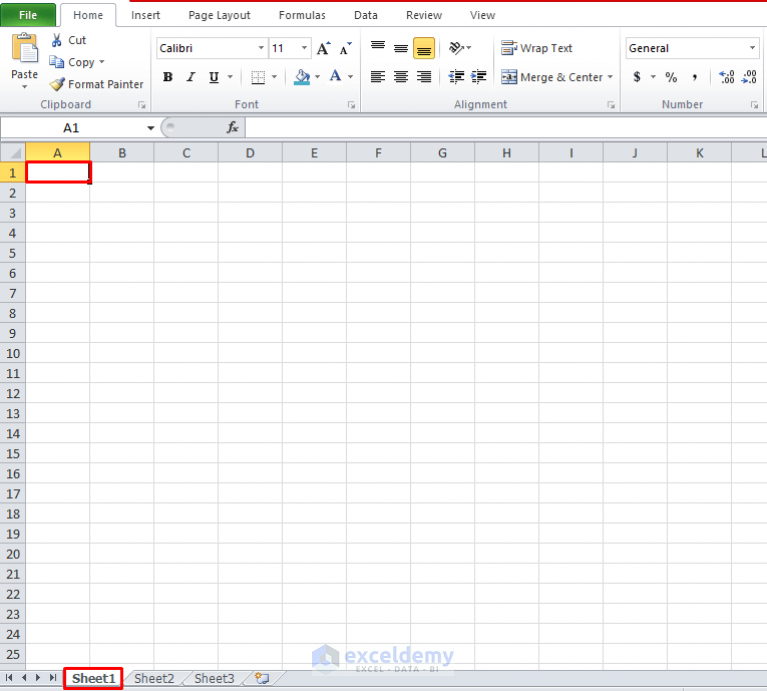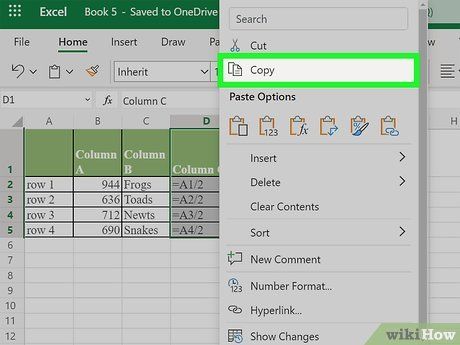5 Ways to Copy Excel Sheets with Formulas

Mastering Excel can significantly boost productivity in any professional environment. One key skill that is often underestimated but can make a profound difference is the ability to copy Excel sheets, especially when formulas are involved. Whether you're a beginner or an experienced user, knowing how to replicate sheets effectively while preserving the integrity of the data and formulas within is crucial. Here, we'll dive into five different methods for copying Excel sheets, each tailored to different needs and scenarios.
Method 1: Basic Copy-Paste

The simplest and most direct method to copy an Excel sheet is through the conventional copy-paste technique:
- Right-click on the tab of the sheet you want to copy.
- Select Move or Copy from the context menu.
- In the dialog box that appears, choose the workbook where you want to place the copy.
- Tick the box labeled Create a copy.
- Click OK.
While this method is straightforward, it is also the most basic and might not suit all scenarios, particularly when dealing with complex workbooks or external references.
⚠️ Note: This method duplicates the entire sheet including charts, data, and formatting but can potentially disrupt external references.
Method 2: Drag and Drop

For those who prefer a more hands-on approach, Excel offers a visual method:
- Press and hold the Ctrl key.
- Click on the sheet tab you wish to copy.
- Drag the tab to the desired location, which could be within the same workbook or into a different open workbook.
This drag-and-drop method is quick for intra-workbook operations and can be intuitive for users accustomed to this interface.
Method 3: VBA Macro

For more advanced users, Visual Basic for Applications (VBA) macros provide a powerful way to automate repetitive tasks, including copying sheets:
Sub CopySheet()
ThisWorkbook.Worksheets("Sheet1").Copy After:=ThisWorkbook.Worksheets(1)
End Sub
This VBA code snippet copies "Sheet1" and places it immediately after the first sheet in the same workbook. VBA macros are ideal for:
- Creating multiple copies of a sheet with slight variations.
- Incorporating complex logic into the copying process.
- Automating tasks across different workbooks.
📝 Note: When using macros, ensure they are properly tested to avoid unintended alterations to your data or formulas.
Method 4: Linking Data Between Sheets

Sometimes, copying isn't necessary if you want to reference data from one sheet in another:
- Enter the formula in the destination sheet like this:
=SheetName!CellAddress. - For example, if you want to reference cell A1 from "Sheet1" in cell A1 of "Sheet2", type
=Sheet1!A1.
This method keeps your source data intact while allowing dynamic updates across sheets. It's particularly useful when you:
- Need to consolidate data from multiple sheets.
- Want to keep multiple sheets in sync without duplicating data.
Method 5: Using 3D References

Excel's 3D reference feature allows you to sum or average data across multiple sheets with a single formula:
| Example Use Case | Formula |
|---|---|
| Sum cells A1 from Sheet1 to Sheet3 | =SUM(Sheet1:Sheet3!A1) |
| Average cells B5 from Sheet1 to Sheet4 | =AVERAGE(Sheet1:Sheet4!B5) |

This technique is invaluable for financial modeling or when tracking data across similar sheets:
- Creates concise formulas instead of long, repetitive ones.
- Provides a clean view of data trends over time or different departments.
In the landscape of Excel sheet copying, there isn’t a one-size-fits-all approach. The method you choose depends on your specific needs, the complexity of your worksheets, and your comfort with Excel features:
- For basic, one-time copying, the basic copy-paste or drag-and-drop methods suffice.
- For automation or when dealing with many sheets, VBA can streamline the process.
- Linking or using 3D references provides flexibility and data integrity across sheets without duplicating.
Each method has its benefits and potential pitfalls. The key is understanding your data structure, the purpose of your analysis, and how these methods can serve your workflow best. By incorporating these techniques into your Excel toolkit, you can manage data more effectively, save time, and ensure the accuracy of your calculations and reports.
Can I copy sheets between different Excel workbooks?

+
Yes, you can copy sheets between different workbooks using the Move or Copy dialog box or the drag and drop method while holding the Ctrl key.
What happens to cell references when copying a sheet?

+
When you copy a sheet within the same workbook, the references to cells in other sheets will remain intact. However, external references might get disrupted if not handled properly.
How do I copy a sheet with all its formatting?

+
All methods listed, except for linking data or using 3D references, will copy the sheet with its formatting. Ensure the “Create a copy” box is checked in the Move or Copy dialog for exact duplication.
Is there a way to automate sheet copying?

+
Yes, by using VBA macros, you can automate sheet copying. This allows for more complex copying scenarios and can save significant time in repetitive tasks.
Can 3D references be used with volatile functions like TODAY() or NOW()?

+
Yes, 3D references work with any Excel function, including volatile functions like TODAY() or NOW(). However, be aware that these functions will update each time the workbook recalculates.



